Imagine a world where robots don't just replace humans but work alongside them in perfect harmony. This isn't a distant sci-fi scenario; it’s happening right now, transforming how we manufacture.
In 2025, cobots—or collaborative robots—are more relevant than ever. As small and medium businesses strive for efficiency, the integration of cobots has become nothing short of a game-changer.
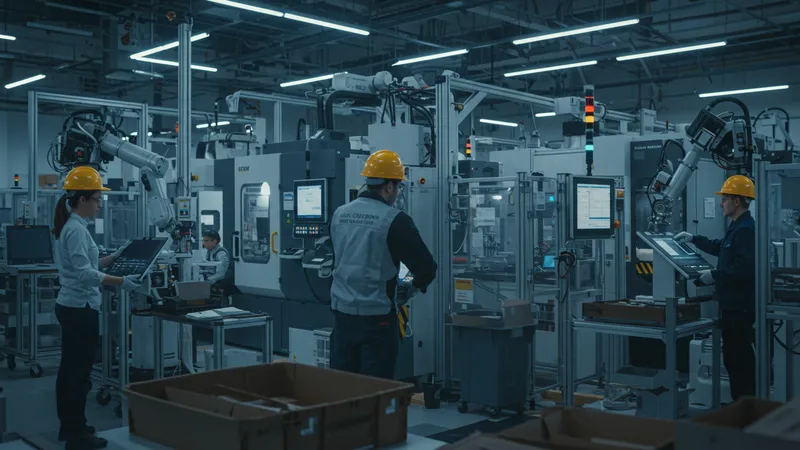
Did you know that cobots are now so advanced they can be unpacked and fully operational in less than an hour? Previously the domain of tech giants, today even small enterprises can deploy cobots with minimal training. But that’s not even the wildest part...
Contrary to popular belief, cobots aren't replacing human jobs; they're creating them. Their applications are so diverse that they've led to the emergence of new roles and industries. Experts are baffled, questioning what this means for the future labor market. Yet, this is just scratching the surface…
What happens next shocked even the experts…
There's a hidden side to the cobot revolution: unexpected economic gains for small and medium businesses. Imagine reducing operational costs by 30% without the need for layoffs. This isn't just a fantasy; it's the reality that cobots offer. Many businesses report a swift return on investment within months, an economic miracle practically unheard of in traditional manufacturing approaches. What's more, local economies are booming as businesses reinvest savings into community growth.
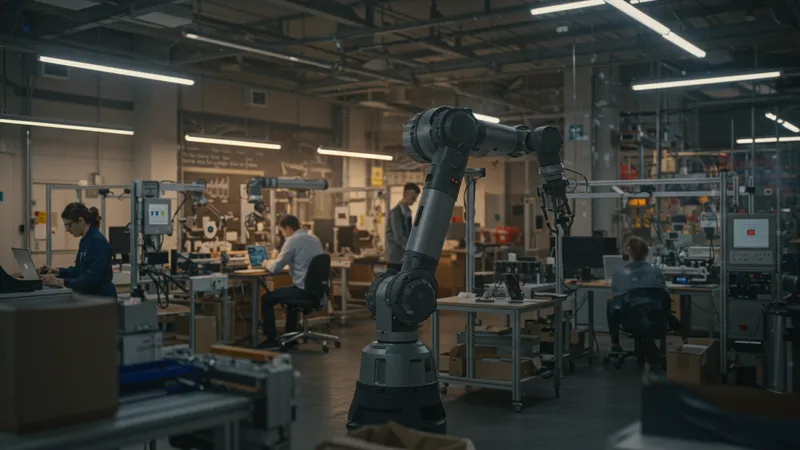
Yet, there's an irony here. While the machines buzz with efficiency, human roles have paradoxically expanded, offering more creative and strategic positions than ever before. But there's one more twist. These roles are proving more fulfilling, attracting talent and reversing brain drain trends. This was something economists hadn't predicted, sparking a newfound optimism across entire industries.
Case studies reveal cobots working tirelessly, ensuring that three-shift production can operate simultaneously without fatigue. For humans, this means fewer night shifts and a reduction in overtime, resulting in improved work-life balance. It’s a new paradigm that benefits all stakeholders, from employees to shareholders. But hold on; there’s an unexpected hurdle to navigate that companies are beginning to realize…
The integration of cobots has led to a surge in demand for high-skilled technicians, leading to an educational gap. Traditional manufacturing roles are fading, supplanted by cutting-edge jobs requiring new skills. This has presented a challenge for training institutions, forcing a comprehensive overhaul of tech education. What you read next might change how you see this forever.
Whether you're a tech enthusiast or feel threatened by the rise of robotics, there's no denying cobots are shifting the traditional lines between human roles and machine work. This change is redefining what it means to work in a manufacturing setting. Instead of menial tasks, humans find themselves in positions that demand creativity and innovation. Cobots have taken over routine and error-prone tasks, paving the way for humans to focus on what truly matters.
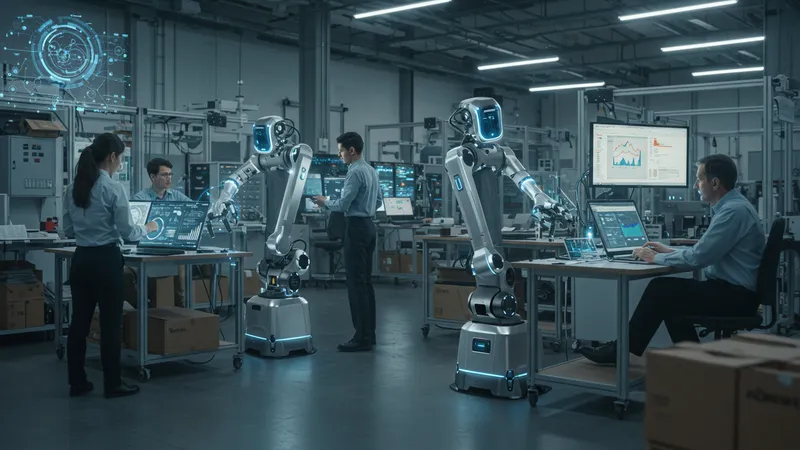
Human workers, once tethered to monotonous manual labor, now boast roles that involve problem-solving and strategic management. Those in the industry are witnessing an evolution, as workers transition into roles that demand not just different skills but a completely altered mindset. As businesses adopt this new model, they're finding that employees are not only more satisfied but also more productive.
The blending of human intuition with robotic precision offers a dynamic that neither could achieve alone. This synergy creates an unparalleled advantage, where both humans and cobots complement each other's strengths. But there's another dimension to this collaboration that's equally compelling. While cobots handle operations, humans are increasingly positioned in areas of innovation and decision-making.
But what if the cobots learn too fast or outperform their human counterparts? While this may sound like the start of a dystopian narrative, the balance between learning capabilities of cobots and human oversight creates an environment of mutual growth. This raises the question: How stringently should we control these learning capabilities? This exploration leads us to the next breakthrough in cobot evolution…
As cobots continue to integrate into manufacturing processes, a debate simmers beneath the surface: the ethical implications of man versus machine. It's an age-old discussion but one made more significant as cobots take on roles that were once the exclusive domain of humans. For some, this raises an ethical quandary about autonomy and decision-making in the workplace.
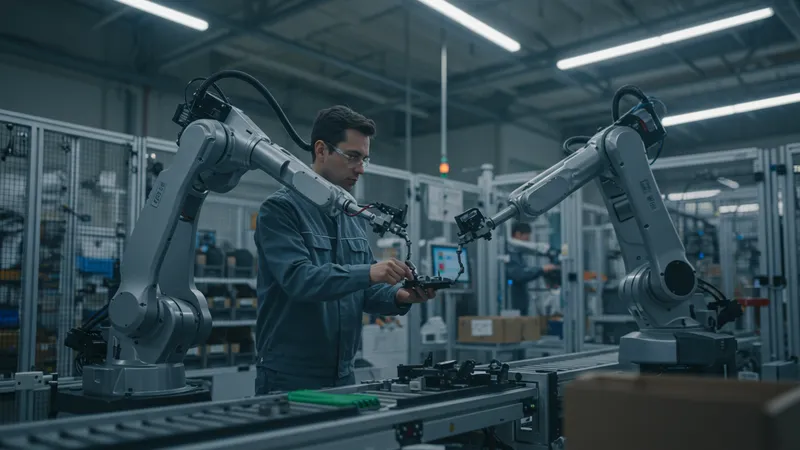
The real concern isn't about whether cobots will take over jobs, but rather how they will coexist with human efforts. Ensuring that cobots remain tools in the hands of talented humans is the key to maintaining ethical standards in the workplace. This symbiosis fosters innovation without supplanting human agency, but it requires vigilance like we've never seen before.
With cobots at the helm of production lines, their programming and decision-making capabilities are scrutinized. Who bears responsibility if a cobot malfunctions or makes an error? This question isn't theoretical; it's a reality businesses are grappling with daily. As cobots become more prevalent, the need for clear ethical guidelines grows even more critical.
While companies strive to find this balance, they are left with a pivotal question: what level of autonomy should these machines have? The ramifications of this question are profound, not just for businesses but for society as a whole. The next breakthrough in cobot technology might soon provide a compelling answer that changes everything…
Cobots are already renowned for their efficiency, but a less-discussed benefit is their ability to break down financial barriers previously constraining small to medium enterprises. What was once technology exclusive to heavy hitters is now attainable to a broader market, thanks to decreasing costs and financing options. Businesses are no longer hamstrung by enormous capital investment needs.
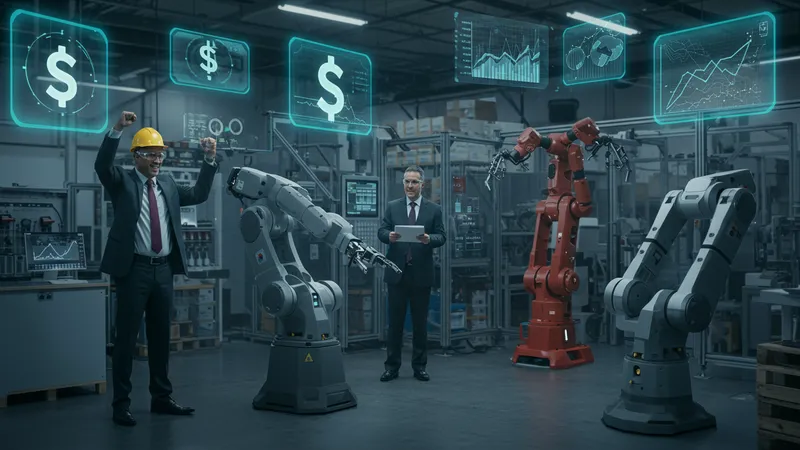
Leasing and financing options have made cobots financially viable for companies of any size. This marks a shift in industry dynamics, leveling the playing field and enabling wider access to cutting-edge technology. Imagine the competitive edge this offers: small businesses with tech traditionally available only to giants in the industry.
Moreover, the operational flexibility cobots offer enables businesses to accommodate fluctuations in demand without requisite spikes in labor costs. Inventory adjustments, production lines changes, and customization happen swiftly, ensuring financial planning is more predictable and optimized for growth. But it doesn’t stop there; cobots also minimize downtime, further cost-saving capabilities few foresaw.
This is just the beginning. As cobots become more prevalent, their costs are projected to decline even further, opening opportunities for more businesses to join the technological revolution. This journey into the future continues with another fascinating revelation in cobot capabilities that you'll discover next…
In the past, automation often suffered from being too rigid; it was a one-size-fits-all solution. In stark contrast, cobots thrive on customization, making them the ideal solution for companies with unique needs. No longer restricted to predefined tasks, cobots can adapt to various roles, assuring their place in any workflow.
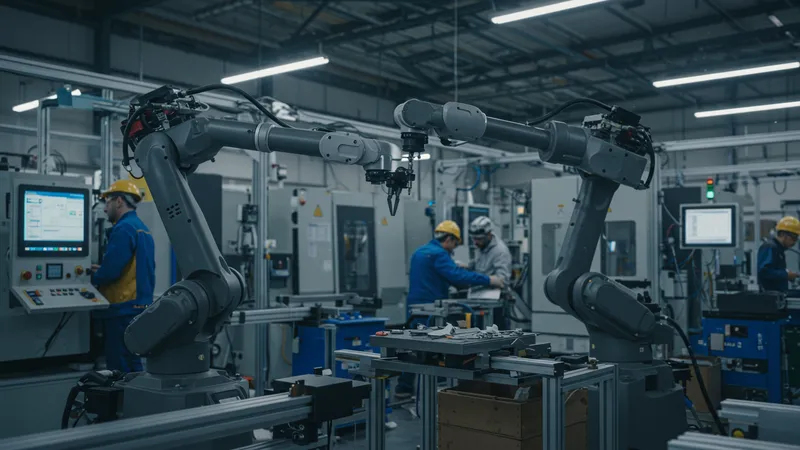
Today's cobots are designed with flexibility in mind, allowing businesses to tailor their functionalities to specific challenges and production needs. Industries benefit from tailored implementations that cater to their unique production cycles. Customizability extends beyond programming; even the physical form of cobots can adapt to different workspace requirements.
This adaptability underscores the cobots’ value proposition, offering solutions in industries ranging from electronics assembly to food production. And with modular designs, companies can upgrade or change functionalities without replacing the entire cobot system, further cementing their role as partners in progress. But there's more to uncover about cobots' versatility that will transform your expectations…
Imagine integrating AI-enhanced cobots capable of learning from their tasks, evolving with each operation. This leap in technological fusion promises an era where cobots are not just tools but intuitive partners capable of foreseeing future production challenges. What you read next will redefine how technology and human ingenuity have merged into one formidable force…
As we stand on the threshold of technological advancement, the amalgamation of cobots and AI is shaping the future of manufacturing in unprecedented ways. The marriage of these technologies offers a glimpse into a world where machines can think, learn, and adapt, pushing the boundaries of what's possible.
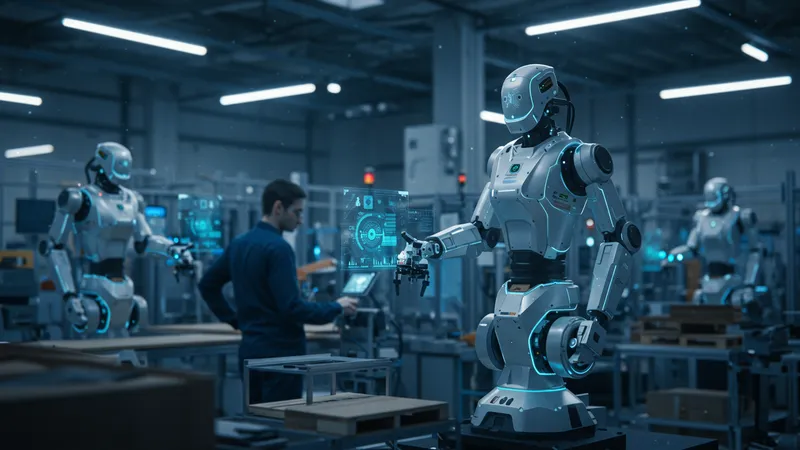
AI empowers cobots to process vast datasets, learn from experiences, and enhance efficiency beyond traditional human capabilities. They’re not merely static machines executing pre-programmed tasks; they evolve much like living organisms. The integration of AI allows cobots to predict maintenance needs, reducing downtime and increasing productivity.
These cobots now collaborate with human workers not just physically but cognitively, understanding nuanced instructions and adjusting operations accordingly. This raises the stakes for human workers, who find themselves in positions demanding higher-level decision-making skills, driving a need for education and skill development that fosters a synergistic relationship with AI-driven machines.
But this technology unveils new challenges, chiefly the need for regulatory frameworks that address the ethical and practical implications of AI-cobot interactions. Preparing for these developments requires foresight and innovation that few own. As we delve deeper into these integrations, a new era of possibilities unfolds—one that defies historical boundaries…
Supply chains, once perceived as rigid and linear, are undergoing a tsunami of transformation with the advent of cobot integration. These versatile robots are transforming logistics, enabling more agile, responsive, and resilient operations than the structures of old.

Cobots are revolutionizing how inventory is managed, packaged, and distributed. Their ability to operate nonstop, adapt to different tasks, and navigate intricate storage environments gives businesses a distinct competitive edge that wasn’t available before. Disruption in supply chains previously spell disaster, but with cobots in place, stability and continuity have become more attainable than ever.
Furthermore, they offer unparalleled precision in tasks such as pick and pack processes in warehouses, leading to minimized errors and increased customer satisfaction. As businesses appreciate these benefits, they are realizing the potential to innovate within their supply chains, leading to reduced lead times and better adaptability to market demands.
The integration of cobots into supply chains is a testament to the shifting balance between efficiency and flexibility. As traditional systems give way to agile, cobot-rich environments, the potential for growth is staggering. Stay tuned as we explore variables that will further shape this landscape into something extraordinary…
In spite of their myriad advantages, the road to cobot ubiquity is not without obstacles. For small and medium enterprises, these barriers can include initial costs, training challenges, and overcoming cultural resistance to automation. However, for those who venture past these stumbling blocks, the rewards are likely to outweigh any initial setbacks.
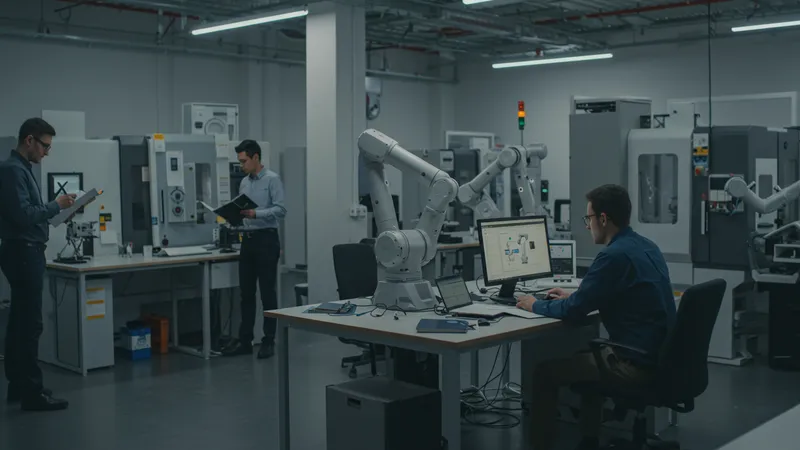
One prominent challenge is the integration with existing systems and technologies. Cobots require compatibility with current infrastructures, which can demand significant investments and adjustments. This underscores the importance of strategic planning and phased implementation to mitigate potential disruptions and maximize cobot benefits.
Additionally, the rapid pace of technological advancement presents a challenge that can't be ignored. Keeping up with continuous innovations requires businesses to be adaptable, with a dynamic approach to learning and development. This involves both human workers and management teams who must be ready to embrace and drive change.
Despite these hurdles, companies progressively recognize the strategic value that cobots offer. As we continue to explore this transformative journey, the integration of cobots into manufacturing is reshaping industries and redefining traditional paradigms. What you'll learn next might just prepare you for the next paradigm shift…
One of the most unexpected yet profound ways cobots are changing manufacturing is through improved workplace safety. While heavy machinery always posed a risk, cobots are designed to work safely alongside humans. Those with in-built sensors detect human presence, drastically reducing workplace accidents.
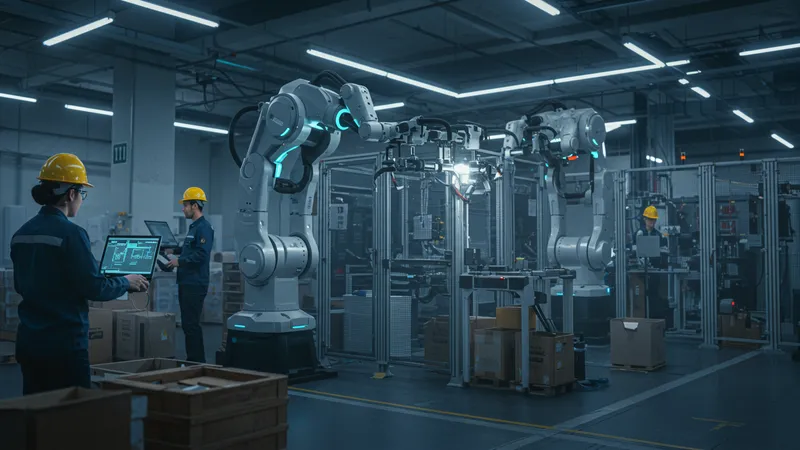
By handling hazardous or repetitive tasks, cobots lessen human exposure to potentially dangerous situations. They take on roles in environments that pose risks, allowing human workers to focus on supervisory and oversight roles instead. This transference of physical risk to machines has led to a decline in workplace injuries, boosting morale and reducing insurance costs.
The human-centered design of cobots ensures that they are not intrusions in the workplace, but rather contributors to an environment that's not just efficient, but also safe. Furthermore, ergonomic stress is reduced, leading to a healthier workforce overall. However, companies must still navigate safety standards and compliance, which continue to evolve with the technology.
As businesses weigh these benefits, the undeniable truth remains: cobots offer an opportunity to transform safety standards within manufacturing. This tale of transformation isn't over; there's more to discover about the unforeseen advancements these machines bring…
Envision the factory of tomorrow, where cobots operate seamlessly beside humans in a harmonious dance of efficiency and creativity. This isn't just an optimistic projection; it's rapidly becoming the status quo for forward-thinking manufacturers. As we look ahead, cobots seem poised to redefine every aspect of the industry.

These robotic assistants are transforming not just production processes, but also the entire manufacturing ecosystem. Their ability to adapt to diverse tasks transforms static assembly lines into dynamic bastions of innovation. Cobots are offering manufacturers the flexibility required to quickly pivot according to market demands, keeping businesses competitively agile.
Moreover, cobots stand as a testament to sustainable manufacturing. They enable processes that consume fewer resources and produce less waste, championing a path toward greener production practices. This trend aligns closely with global efforts toward environmental responsibility and long-term sustainability.
As the curtain rises on this new industrial era, cobots emerge as protagonists in a continually unfolding story of transformation and progress. Stakeholders from every sector are watching closely, predicting the innovations yet to come. For those embracing cobots, the future holds endless potential and promise.
Now that cobots are a staple in manufacturing, the democratization of innovation is occurring across all tiers of the industry. No longer confined to large firms, technological advancement is accessible to smaller businesses, fostering a more inclusive innovation environment. This paves the way for new market entrants and encourages diverse thinking.
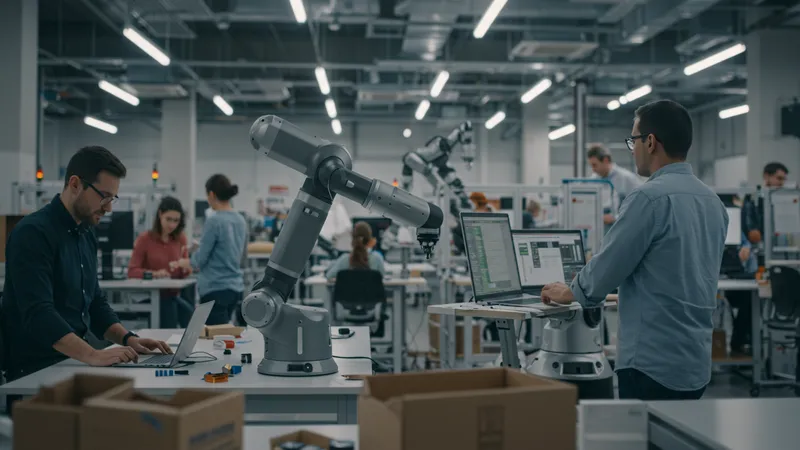
Cobots are designed with user-friendly interfaces that level the playing field, allowing non-experts to program them with ease. This removes traditional bottlenecks associated with automation and allows creativity to flourish. As a result, small and medium enterprises can execute ideas quickly, propelling them into the market at an accelerated rate.
The ripple effect is a burgeoning culture of innovation, creating opportunities previously unavailable to more modest-sized businesses. It's becoming clear that cobots are agents of change, redefining how the market functions and creating competitive advantages for those willing to adapt.
As bold ideas become reality, the barriers to innovation continue to crumble. Cobots act as the catalyst for an era where opportunity abounds, not because of resources, but because of bold ideas. As we look forward to the next shift in manufacturing, cobots stand at the helm of change…
As the cobot revolution expands, the demand for skilled labor capable of working alongside intelligent machines is growing. Bridging this skills gap is imperative for sustaining growth and ensuring future workforce readiness. The need for training programs that cater to new and evolving roles becomes crucial in this landscape.
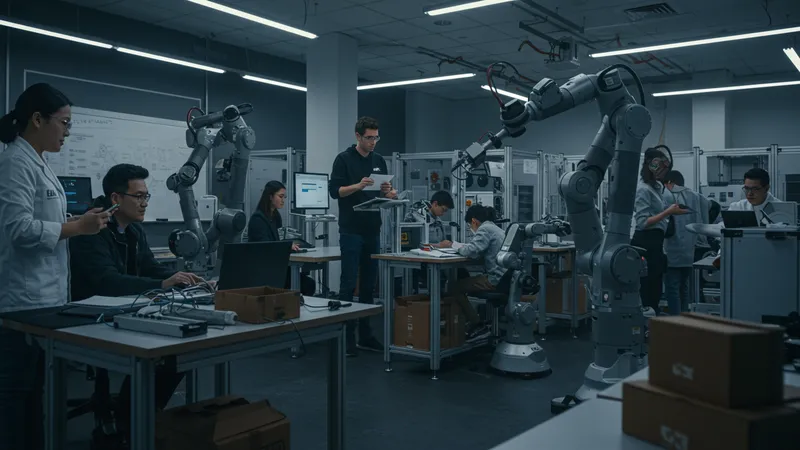
Educational institutions and businesses are joining forces to develop curricula that focus on skills required in the new manufacturing age. Such partnerships are creating fruitful environments for innovation, embracing both practical training and theoretical learning. With the growing presence of cobots, continual education becomes a norm for workers seeking advancement.
Moreover, reskilling and upskilling initiatives within companies are gaining momentum, providing employees with opportunities to step into higher level, value-added positions. This approach boosts job satisfaction while also meeting the growing technological demands of modern manufacturing.
Organizations that prioritize workforce development are poised to thrive, leveraging human capital as a competitive advantage. As cobots shape the future of work, the focus must align with preparing today's workforce for the demands of tomorrow. This progression signifies more than transformation; it's an evolution in the very fabric of work…
With the global drive towards sustainability, cobots are emerging as unexpected champions of ecological consciousness within manufacturing. Their deployment heralds a new era where efficiency and environmental stewardship are not mutually exclusive but intertwined priorities. This marks a profound shift in manufacturing ethos.
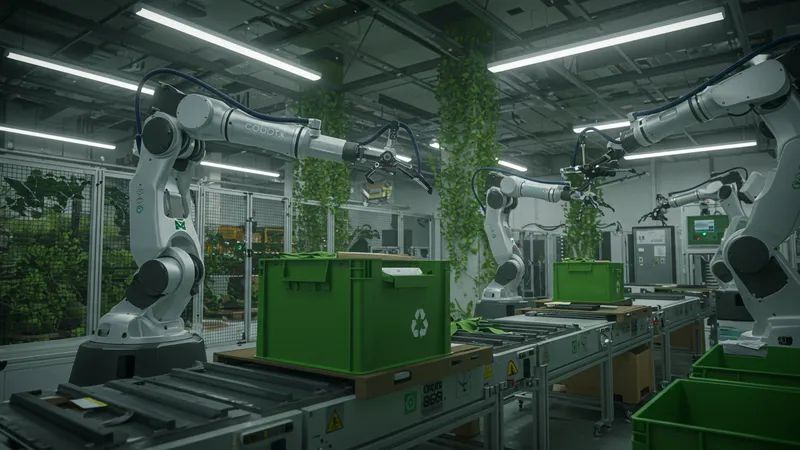
Cobots enhance resource utilization, reducing energy consumption and waste. Through precise operations and adaptability, they lower resource-intensive processes and champion recycling within production lines. This alignment with sustainable practices echoes the global call for reduced carbon footprints.
Furthermore, cobots are key players in advancing circular economies, where end-of-life processes are an integral part of the manufacturing cycle. Designing with material reuse in mind, they contribute to the creation of products with extended life cycles and reduced waste.
As environmental imperatives continue to drive change, cobots provide the ideal ally for businesses committed to sustainable manufacturing. Their role extends beyond efficiency; they are catalysts for establishing industries that are as responsible as they are resilient—a vision that's only just beginning to unfold.
The social implications of integrating cobots into manufacturing extend beyond technological improvements and economic gains. Their adoption is reshaping community landscapes, employment trends, and societal structures in unanticipated ways. As cobots fill roles traditionally occupied by human labor, social dynamics are recalibrating.
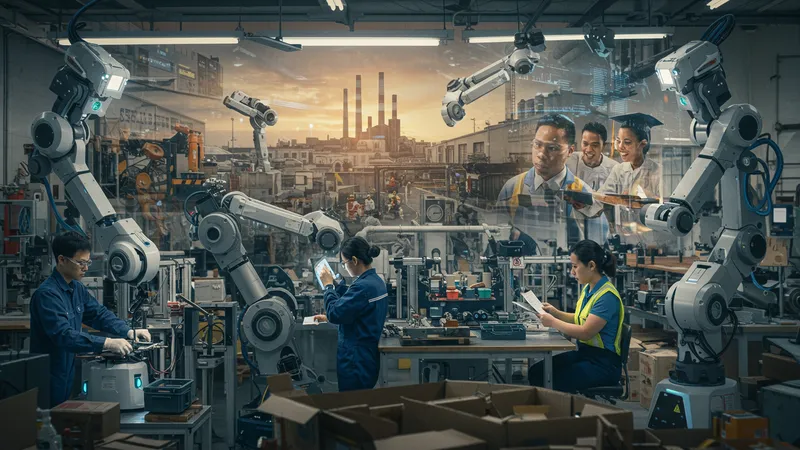
In regions historically reliant on manufacturing, cobots offer new opportunities for economic revitalization and growth. They are paving the way for a deeper integration of technology within communities, all while encouraging educational advancement and skill development conducive to modern labor demands.
The advent of cobots is also exploring inclusivity in employment, supporting diverse workforces by accommodating workers of all abilities. This aspect of inclusivity extends beyond physical capabilities, embracing cultural and demographic diversity by reducing barriers to entry in technology-driven roles.
As we delve deeper into the influence of cobots, their social impact becomes increasingly significant. From reshaping economies to redefining human potential, cobots offer a multifaceted approach that echoes a future of inclusivity and growth. The learning curve continues, revealing the intertwined fates of humanity and technology…
Globally, companies are leaping at the chance to integrate cobots into their manufacturing processes, buoyed by success stories that chart amazing transformations. From humble beginnings in small workshops to advanced applications at industry-leading manufacturers, cobots are making waves.
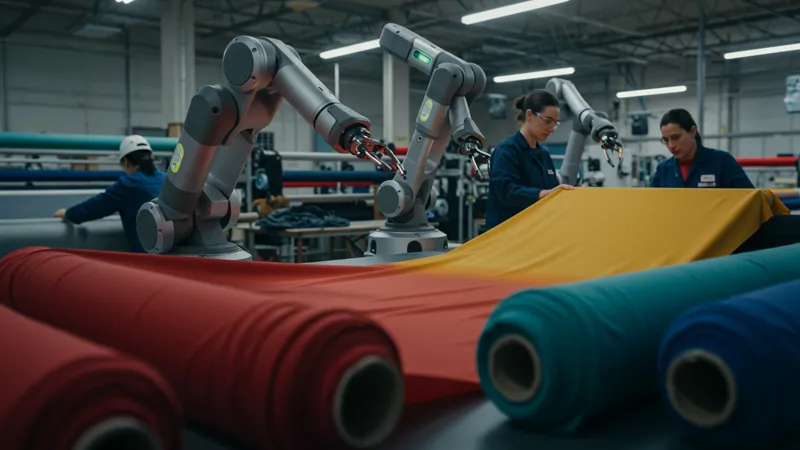
One such story involves a fabric manufacturing company that increased throughput by 50% after adopting cobots for quality inspections. The newfound capacity allowed them to diversify product lines, penetrating new markets previously beyond their reach. This narrative highlights cobots' potential to drive competitive advantages.
Another tale features a small electronics firm specializing in bespoke solutions. Cobots enabled faster prototyping, reducing time-to-market by 40%. This efficiency jump resonated with clients, solidifying the company's position in a competitive sector. It's a clear indication that cobot-enabled agility breeds success.
In logistics, a mid-sized firm saw efficiency gains of over 30% in their warehouse operations with cobots managing inventory movements. This enhancement not only reduced overheads but also improved customer satisfaction due to faster shipment times—a direct correlation between cobot integration and market expansion.
As we stand at the cusp of yet another milestone in manufacturing, predictions for the next decade paint a picture of heightened cobot integration across industries. By 2030, cobots are expected to permeate even the most niche sectors, revolutionizing every facet of production and design landscapes.
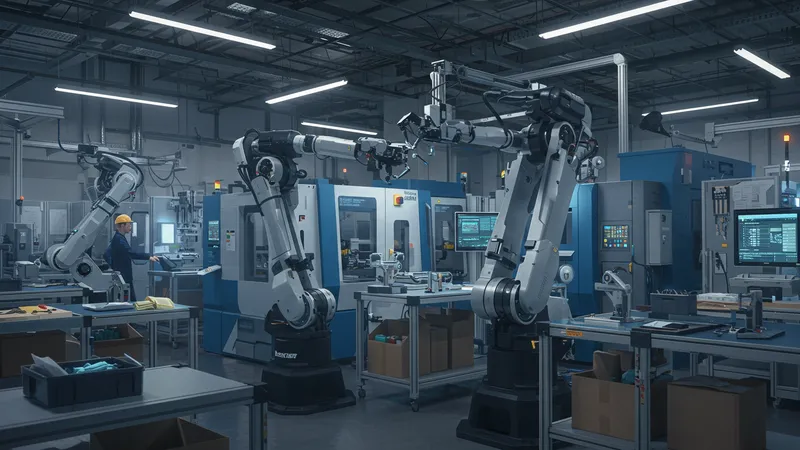
Expect unprecedented levels of customization, where cobots seamlessly adapt to varied tasks, enhancing both large-scale operations and artisanal craftsmanship. Their evolving roles will see them participating in workflows that are only just starting to take shape, sparking another wave of industrial revolution.
The dynamic synergy between cobots and other emergent technologies like blockchain and IoT will redefine how data and manufacturing processes interact. This convergence will streamline operations, offering unparalleled transparency across supply chains and accelerating innovation cycles.
As reliance on cobots grows, so will the demand for forward-thinking business leaders who can anticipate and leverage these advancements. The road ahead looks less like a clear highway and more like a tapestry of unprecedented opportunities. As we chart these waters, strategic vision will distinguish the pioneers from the followers.
In conclusion, cobots are more than just another piece of technology—they are pivotal players in the evolving narrative of manufacturing. As catalysts for transformation, they embody innovation and inclusivity, redefining what’s possible for businesses of all sizes. Their impact is profound, extending far beyond mere productivity gains.
Embrace this new era with excitement and curiosity, for what lies ahead promises endless opportunity. If you’re ready to be part of this revolution and drive your business into the future, now is the time to take action, share these insights, and forge your own path. Don’t be a spectator—be a participant in shaping the future of industry.